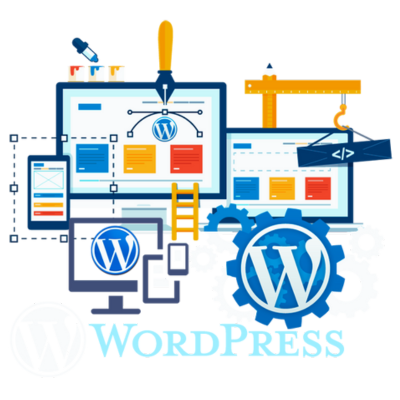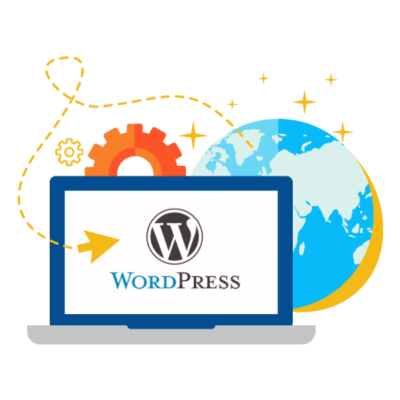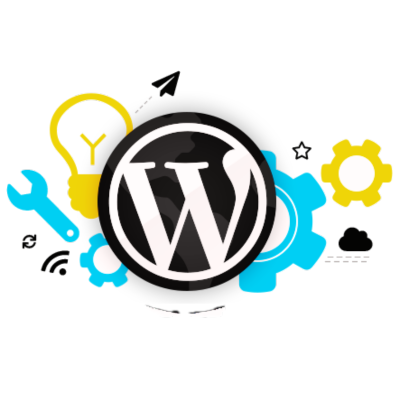Introduction
Creating a visually appealing and functional website is crucial for businesses looking to stand out in the competitive online landscape. WordPress, with its extensive library of themes and plugins, is a popular choice for building websites. However, simply using a pre-designed theme may not always align with your brand’s identity or meet specific functional needs. That’s where customizing WordPress themes comes into play.
In this guide, we will explore how to customize WordPress themes to design a unique website tailored to your requirements. Whether you’re a business owner seeking WordPress development services or a developer offering custom WordPress development services, this blog provides actionable insights to help you achieve professional results.
Why Customize WordPress Themes?
WordPress themes serve as the foundation for website design and functionality. While they provide a solid starting point, customizing them allows you to:
- Achieve Brand Consistency: A unique design ensures that your website reflects your brand identity.
- Enhance User Experience: Custom layouts and features can make navigation intuitive and engaging.
- Optimize Functionality: Tailored features cater to specific business needs, such as eCommerce capabilities or advanced content management.
- Stand Out From Competitors: A custom theme distinguishes your site from others using generic templates.
Businesses often collaborate with a WordPress development company to unlock the full potential of theme customization, ensuring both aesthetics and performance.
Expert WordPress Development Solutions
Partner with a top WordPress development company for custom websites, tailored solutions, and expert services to grow your online presence.

Step 1: Selecting the Right Theme
The first step in creating a unique website design is selecting a theme that aligns with your goals. Consider these factors:
- Compatibility: Ensure the theme supports the latest WordPress version and essential plugins.
- Customization Options: Look for themes with flexible customization settings.
- Responsive Design: Choose a theme that offers mobile-friendly layouts.
Premium themes often provide better design flexibility, making them an excellent choice for businesses seeking custom WordPress development services.
Step 2: Setting Up a Child Theme
To ensure your customizations remain intact after theme updates, it’s crucial to create a child theme. A child theme inherits the functionality of the parent theme while allowing you to override specific files.
How to Create a Child Theme:
1. Create a New Folder:
- Navigate to wp-content/themes/ in your WordPress installation directory.
- Create a new folder, e.g., mytheme-child.
2. Add a style.css File:
Inside the child theme folder, create a style.css file with the following content:
/*
Theme Name: MyTheme Child
Template: mytheme
- */
3. Add a functions.php File:
Create a functions.php file and enqueue the parent theme’s styles:
<?php
function mytheme_child_enqueue_styles() {wp_enqueue_style(‘parent-style’, get_template_directory_uri() . ‘/style.css’);}
- add_action(‘wp_enqueue_scripts’, ‘mytheme_child_enqueue_styles’);
4. Activate the Child Theme:
- Go to Appearance > Themes in your WordPress dashboard and activate your child theme.
Using a child theme ensures your changes are protected during parent theme updates.
Step 3: Customizing Appearance with the WordPress Customizer
WordPress includes a built-in Customizer tool that allows you to make visual changes to your site without editing code. Navigate to Appearance > Customize to:
- Change site colors, fonts, and backgrounds.
- Modify header and footer layouts.
- Adjust widget placements and menus.
For businesses relying on WordPress website development services, the Customizer provides an intuitive interface for real-time design updates.
Step 4: Editing Theme Files for Advanced Customizations
For more complex modifications, you may need to edit theme files directly. This approach requires familiarity with PHP, HTML, and CSS.
Common Files to Edit:
- Header (header.php): Customize the header layout and add elements like logos or navigation menus.
- Footer (footer.php): Modify footer content, such as contact information or social media links.
- Single Post (single.php): Adjust the layout of individual blog posts.
Always back up your theme files before making changes and use a child theme to ensure your edits are safe from updates.
Custom WordPress Development Services
Explore professional WordPress development services to build, customize, and optimize websites tailored to your business needs and goals.

Step 5: Adding Custom CSS
For quick design tweaks, you can add custom CSS without modifying theme files. Navigate to Appearance > Customize > Additional CSS and enter your code. For example:
body {background-color: #f0f0f0}
h1 { font-size: 36px;
color: #333;}
This method is ideal for developers offering WordPress developer services, as it provides a quick way to implement visual changes.
Step 6: Using Plugins to Extend Functionality
Plugins are essential for adding advanced features to your WordPress site. Some popular plugins for customization include:
- Elementor: A drag-and-drop page builder for designing custom layouts.
- Advanced Custom Fields (ACF): Allows you to add custom fields to your posts and pages.
- WooCommerce: Ideal for businesses requiring WordPress eCommerce development services.
These tools streamline the customization process, making it easier to create a unique design without extensive coding.
Step 7: Implementing Custom Features
Custom features can elevate your website by addressing specific business needs. Examples include:
1. Custom Post Types
Custom post types allow you to create unique content structures. For instance, a real estate website might need a “Property” post type. Add this code to your functions.php file:
function create_property_post_type() {
register_post_type(‘property’,
array(
‘labels’ => array(
‘name’ => __(‘Properties’),
‘singular_name’ => __(‘Property’)
),
‘public’ => true,
‘has_archive’ => true,
‘supports’ => array(‘title’, ‘editor’, ‘thumbnail’),}
add_action(‘init’, ‘create_property_post_type’);
2. Custom Widgets
Create widgets to display dynamic content like recent posts, call-to-action buttons, or social media feeds.
3. Multilingual Support
For businesses targeting global audiences, integrate multilingual plugins like WPML or Polylang. These tools are commonly used in WordPress CMS development services to provide localized content.
Step 8: Optimizing Performance
Customization can sometimes affect your site’s performance. To ensure optimal speed and functionality:
- Optimize Images: Use tools like TinyPNG to compress images.
- Minify CSS and JavaScript: Use plugins like Autoptimize to reduce file sizes.
- Enable Caching: Install caching plugins like W3 Total Cache to improve load times.
4. Use a CDN: Content Delivery Networks (CDNs) like Cloudflare ensure faster content delivery globally.
Step 9: Testing and Launching
Before launching your customized theme, thoroughly test your site:
- Responsive Design: Ensure your site looks great on all devices.
- Browser Compatibility: Test your site on major browsers like Chrome, Safari, and Firefox.
- Performance: Use tools like Google PageSpeed Insights to identify and resolve issues.
- Accessibility: Ensure your site meets accessibility standards, allowing all users to navigate it easily.
Once testing is complete, deploy your site confidently, knowing it delivers a unique and polished user experience.
Professional WordPress Development Team
Hire expert WordPress developers to build, customize, and optimize your website for seamless performance, functionality, and design.

Conclusion
Customizing a WordPress theme is an excellent way to create a website that reflects your brand’s identity and meets specific business needs. From simple visual tweaks to advanced functionality, the customization process can transform a generic theme into a unique and professional website.
Whether you’re a business owner seeking WordPress website development services or a developer providing custom WordPress development service, mastering theme customization is essential. By following the steps outlined in this guide, you can create a website that stands out, performs well, and delivers a seamless user experience.
For advanced projects or specialized requirements, consider partnering with a custom WordPress development company. Their expertise can help you unlock the full potential of WordPress, ensuring your website is both visually stunning and functionally robust. Start customizing today and take your online presence to the next level!




